Range 2,795 km Cruise speed 732 km/h Wingspan 14 m | Top speed 737 km/h Length 14 m Unit cost 7,000,000–7,000,000 USD | |
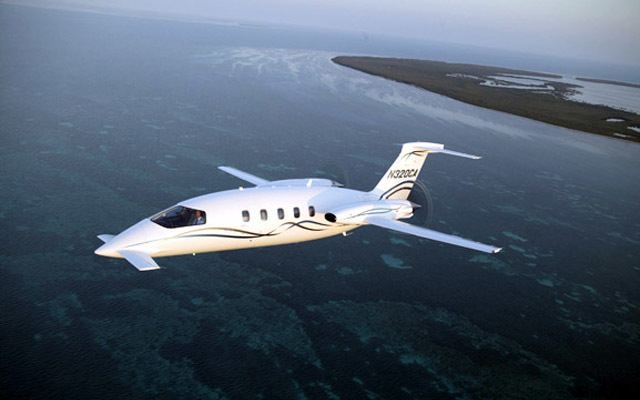 | ||
Engine type Pratt & Whitney Canada PT6 | ||
Piaggio p 180 avanti ii
The Piaggio P.180 Avanti is an Italian executive transport aircraft with twin-turboprop engines mounted in pusher configuration. It seats up to nine passengers in a pressurized cabin, and may be flown by one or two pilots. The design is of three-surface configuration, having both a small forward wing and a conventional tailplane as well as its main wing, with the wing spars passing outside of the passenger cabin area.
Contents
- Piaggio p 180 avanti ii
- Piaggio p 180 avanti ii at avalon international airshow 2011
- Development
- Design
- Variants
- Civil
- Government
- Specifications P180 Avanti Evo
- References
Piaggio p 180 avanti ii at avalon international airshow 2011
Development
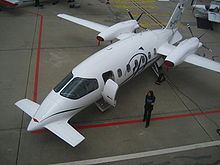
Design studies began in 1979 and designs were tested in wind tunnels in Italy and the United States in 1980 and 1981. A collaboration with Learjet to develop the aircraft began in 1983, but ended on 13 January 1986, with Piaggio continuing development on its own. The first prototype flew on 23 September 1986. American and Italian certification was obtained on 2 October 1990. Learjet's influence can be seen in the two "delta fins" mounted on the bottom of the tail, as found on most Learjets; these devices help provide yaw stability and pitch stability at high angles of attack.
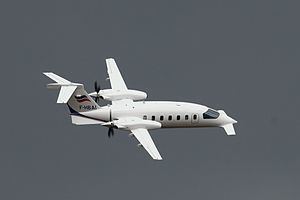
The first 12 fuselages were manufactured in Wichita, Kansas, with H & H Parts and Plessey Midwest, then flown to Italy for final assembly. Avanti Aviation Wichita ran out of money in 1994; the project languished until a group of investors led by Piero Ferrari became involved in 1998. The 100th aircraft was delivered in October 2005 and the 150th in May 2008. Piaggio has reported that, as of October 2010, the Avanti and Avanti II fleets have now logged over 500,000 flying hours.
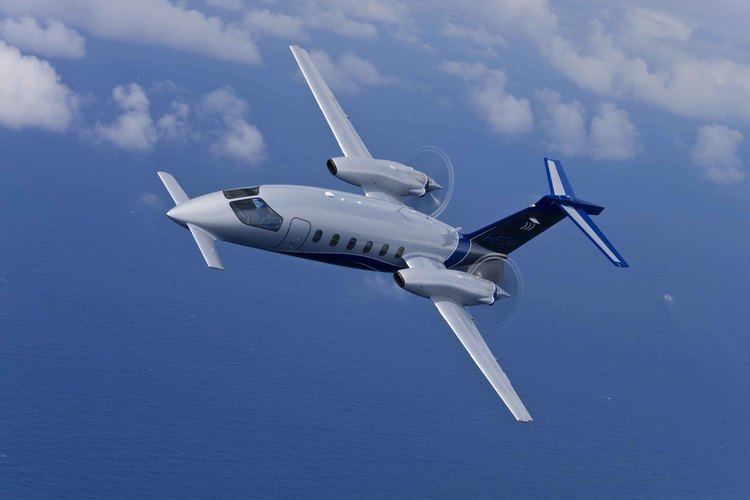
An improved Avanti II obtained European and U.S. certification in November 2005. Six months later, 70 planes had been ordered, including 36 by Avantair. The Avanti II features uprated Pratt & Whitney Canada PT6 turboprop engines and flies about 18 km/h (11 mph) faster, with better fuel economy; an all-new "glass panel" avionics suite reduces cockpit clutter. In addition to heading, attitude and navigation information, flat panel color LCD displays add collision avoidance (TCAS), ground proximity (TAWS) and real-time graphic weather depiction.
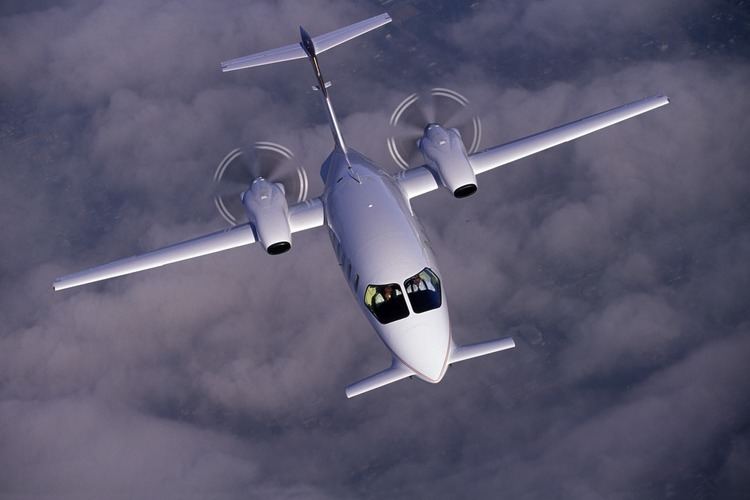
The Avanti is marketed as being faster than other turboprops and many midsized jets, while being up to 40% more fuel efficient than market-competing jets.
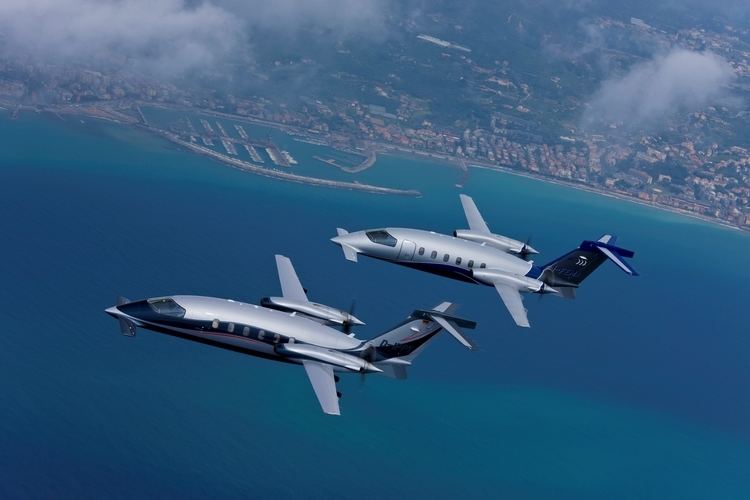
The first Avanti EVO manufactured at the new $150 million factory at Albenga Airport was delivered in 2016, one year after moving production from its previous Genoa Cristoforo Colombo Airport plant.
Design
The Avanti's turboprop engines are placed on a mid-set, high aspect ratio wing located just behind the cabin. The three-surface design incorporates both a T-tail and a pair of small, fixed forewings having slight anhedral and landing flaps. On the Avanti II these flaps automatically deploy in concert with the main wing flaps. This reduces the load on the tailplane, even when the flaps are deployed, by reducing the pitch-down moment created by the deployment of the main wing flaps. This in turn allows the size of both the tailplane and the main wing to be reduced. This particular three-lifting-surface configuration was patented in 1982.
The forward wing's angle of incidence is slightly greater than that of the main wing, so that it stalls before the main wing, producing an automatic nose-down effect prior to the onset of main wing stall; its five-degree anhedral (negative dihedral) keeps the stream wash interference clear of the engine inlets, the main wing and the tailplane.
The cabin cross-section varies continuously along the length of the aircraft; the shape approximates an NACA airfoil section, and the slowly changing curve helps prolong laminar flow on the front of the fuselage. Piaggio claims that the fuselage contributes up to 20% of the Avanti's total lift, with the front and rear wing providing the remaining 80%. Due to the unusual fuselage shape, the mid cabin is considerably wider than the cockpit. The front and rear airfoils are custom sections designed by Dr. Jerry Gregorek of Ohio State University's Aeronautical and Astronautical Research Laboratory to achieve a drag-reducing 50% laminar flow at cruise. The company claims the overall design of the P180 Avanti II enables the wing to be 34% smaller than on conventional aircraft.
The P180 is said to have good fuel efficiency relative to small turbojets flying in the same speed and altitude range. Flight International stated: "The Avanti has no direct turboprop competitors, its closest jet rivals are the Raytheon Premier I and the Cessna Citation CJ2+ ... Piaggio says low-drag laminar flow is maintained to around 50% of the wing chord, compared with around 20–25% for conventional tractor turboprops where propeller wash disturbs the airflow over the wing... specific air range at high altitude is 3.4km/kg (0.84nm/lb) compared with around 2km/kg (0.49nm/lb) for current jets or 2.7km/kg (0.67nm/lb) for other turboprops." By this estimate, mileage is 70% better per fuel unit than comparable jet aircraft, although this greater efficiency is achieved only at a relatively slow 315 KTAS and FL410. P180 Avanti II Specifications now show slightly lower numbers for specific range of 3.1 km/kg (0.76 nm/lb).
Interior noise is lower than conventional turboprop aircraft, because the propellers and engine exhausts are located behind the cabin. Piaggio quotes 68 dBA. However, due to the strongly disturbed flow in which the pusher propellers operate, the exterior noise is higher. The exterior noise level and its higher pitched sound has been shown to be the result primarily of the interaction of the turbine engine exhaust flows and the five-bladed pusher propellers (est. +9 dB). On takeoff, the Avanti has been measured at 81.9 dBA sideline noise level, slightly lower than the Beechcraft King Air at 82.8 dBA. This is below FAA stage 3 noise limits, which set a maximum of 89 EPNdB for takeoff. However, the P180 has been the subject of noise complaints at airports, such as Naples Municipal Airport, Florida, where the airport authority determined it was the noisiest aircraft using that facility. Alan Parker, chairman of the Naples Municipal Airport Authority's technical committee, described the Avanti as "irritating loud" and compared the high pitched sound "to fingernails on a chalkboard".
The Piaggio P.180 Avanti has a sea level, standard day, maximum gross weight takeoff distance of 869 m (2,851 ft) and a landing roll of 872 m (2,861 ft).
Deliveries were at a high of 30 in 2008, but only two in 2013.
In 2014 Piaggio announced development of an updated version, called EVO. It uses new Hartzell composite propellers, with blades of scimitar configuration. Its wings carry new winglets; aerodynamic improvements have been incorporated, and an additional 60-gallon (400 lb) fuel tank is added. The company predicts improved climb performance, 250 nm greater range, and 3% reduction in fuel usage. The revised propeller shape, combined with a lower engine speed, promises a 68% reduction in external noise. EASA certification is expected by December 2014. Projected purchase price is in the $7.4 million range. The first Evo was delivered in April 2015, with five more to follow the same year.
Variants
Civil
The Avanti is operated by charter companies and small feeder airlines, and is also used as a business aircraft. The fractional aircraft operator Avantair had a fleet of 56 aircraft before they went bankrupt and the fleet was liquidated.
Government
Specifications (P180 Avanti Evo)
Data from Aviation Week
General characteristics
Performance
